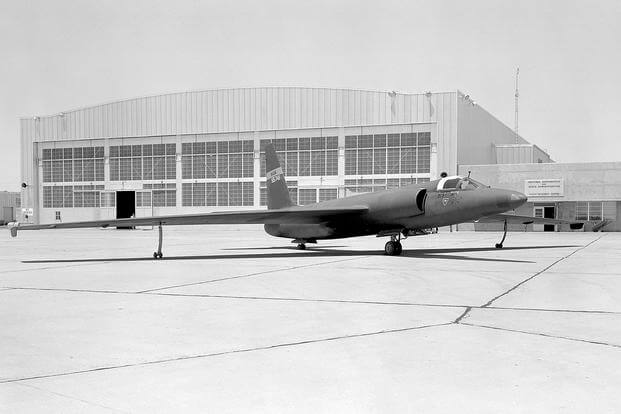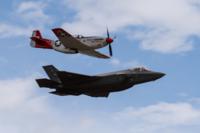In 1960, the Soviet Union shot down a lone American flying at 80,000 feet above its cities.
The secret mission was to gather intelligence and was co-sponsored by the Central Intelligence Agency and the U.S. Air Force. The pilot was Francis Gary Powers.
A proven pilot, Powers participated in the American effort to counter the growing advantage that the Soviets enjoyed with their intelligence gathering networks.
Europe and even American institutions were rife with KGB spy cells, all collecting valuable information on the military preparedness of the United States and its NATO allies.
At the time, the Soviet held a distinct advantage in human intelligence gathering, and satellites had not yet become the dominant feature of spy versus spy. To bridge this gap, the United States intelligence community put its faith in the "Dragon Lady," the Lockheed U-2, and the courageous men who flew them.
The concept of a high-altitude, long-range reconnaissance plane had been bandied about within the CIA since the end of World War II, but the concept finally bore fruit at the Lockheed "Skunk Works" in December 1954, under the guidance of Clarence "Kelly" Johnson. The project was originally given a budget of $35 million to develop 30 planes that were to include a new high-altitude camera developed by Edwin Land. The first U-2 was built in 88 days, and it made its maiden flight in August 1955.
By the time of the incident, Powers was already a veteran in the black world of covert reconnaissance missions. Born on Aug. 17, 1929, in Kentucky, he entered the U.S. Air Force's aviation cadet training program in 1951 and earned a commission as a second lieutenant a year later. After completing his training, Powers flew F-84 Commandos while assigned to the 468th Strategic Fighter Squadron at Turner Air Force Base, Georgia. He "left" the Air Force to work in the deepening shadows of the ultra-secret U-2 program in 1956 when the CIA recruited him. That year, Powers joined five other men in Adana, Turkey, to fly "weather missions."
Powers was one of the men charged with the mission of flying on the atmosphere's edge, at altitudes that designers and military experts thought made these planes invulnerable to Soviet air defenses. In June 1956, the U-2 first flew over the Soviet Union from Adana to Bodo, Norway, a distance of 3,788 miles at an altitude of 80,000 feet. The Soviet air defenses detected the flight, but the U-2 flew too high for effective countermeasures. Later, counter-spy efforts uncovered that Selmer Nilsen, a Soviet agent at the Bodo Air Base, routinely compromised the U-2 missions by turning over flight times and routes. In a spirit of detente and in preparation for the Paris Summit Conference in May 1960, U-2 flights were suspended briefly from September 1959 through April 1960 by President Dwight D. Eisenhower.

On May 1, 1960, flights resumed, and Powers confirmed scheduling for a routine flight from Peshawar, Pakistan, covering 3,000 miles across the Soviet Union. The information was leaked to the Soviets, and MiGs shadowed Powers' flight at a lower altitude from the time it crossed into Soviet airspace to where a SAM-2 missile shot it down over Sverdlovsk. Powers made it out of the plane safely, but unable to detonate the self-destruct charge on the plane, he landed amidst the top-secret wreckage of the U-2 and found himself in the care of the KGB.
Eisenhower learned immediately of the incident, and to mask the nature of the flight, he instructed the NASA press office to issue a statement that the aircraft had been conducting weather research and may have strayed off course into restricted Soviet airspace after Powers reported "difficulties with his oxygen equipment." To lend credibility to this statement on May 6, a U-2 at the NASA Flight Research Center at Edwards Air Force Base, California, received fictitious NASA registration and markings and was shown to the press.
Tense last-minute negotiations with the Soviets filled the next seven days. On May 7, Soviet Premier Nikita Khrushchev informed the world press an American spy plane had been shot down in Soviet airspace, stating, "The militarists in the Pentagon seem unable to call a halt to their war effort," and placed recovered parts of the wreckage on display.
Tensions also ran high the following week with Khrushchev threatening retaliation against U-2 bases on May 15 and walking out of the Paris summit, effectively collapsing the peace talks on May 16. Eisenhower's initial claim he had no knowledge of such flights was difficult to maintain, and Khrushchev openly questioned the intent of the United States in the peace process.
While these high-level negotiations played out, Powers was brought to Moscow and held at KGB headquarters at Dzerzhinsky Square. After being interrogated extensively, where he never revealed specific altitude or camera information, Powers stood trial for espionage on Aug. 19, his 31st birthday. During the proceedings, Powers made a "voluntary confession" in which he said he was "deeply repentant and profoundly sorry" for his actions. Found guilty of crimes against the Soviet people, Powers received a sentence of 10 years' imprisonment. Considered an employee of the CIA and not a member of the military, Powers did not get the same treatment as a POW.
In 1962, after serving two years, the Soviets exchanged Powers for captured Soviet spy Rudolf Abel. Though Powers had not given the Soviets details of the U-2 program, he received a very cold reception upon his return to the United States. Knowing the conditions under which Powers had operated and of his imprisonment, Lockheed's Kelly Johnson hired him as a test pilot. He flew the U-2 for Lockheed until early 1970.
Powers died in 1977 in the crash of a helicopter that he flew for a Los Angeles television station. While declassified Cold War documents revealed in 1998 that Powers' mission was a joint operation by the CIA and the Air Force, it was not until May 1, 2000, the 40th anniversary of the U-2 incident, that the U.S. government posthumously awarded his family the medals denied to Powers while he was alive. Powers' family accepted a Distinguished Flying Cross, Department of Defense Prisoner of War Medal and National Defense Service Medal during a ceremony at Beale Air Force Base in Northern California.
Speaking at the award ceremony, Brig. Gen. Kevin Chilton said, "The mind still boggles [over] what we asked this man to do: Fly in a plane ...over downtown Moscow, alone, unarmed and unafraid, then to suffer in prison during what indeed was a war, the Cold War."
Want to Know More About the Military?
Be sure to get the latest news about the U.S. military, as well as critical info about how to join and all the benefits of service. Subscribe to Military.com and receive customized updates delivered straight to your inbox.















